Dr. Phil Zeltzman’s Blog
A (double) Christmas miracle…
Once upon a time, there was a dog named Madeline.
The 7-year-old shepherd mix had had trouble urinating for about 2 months. She strained to urinate, with frequent attempts, and accidents in the house.
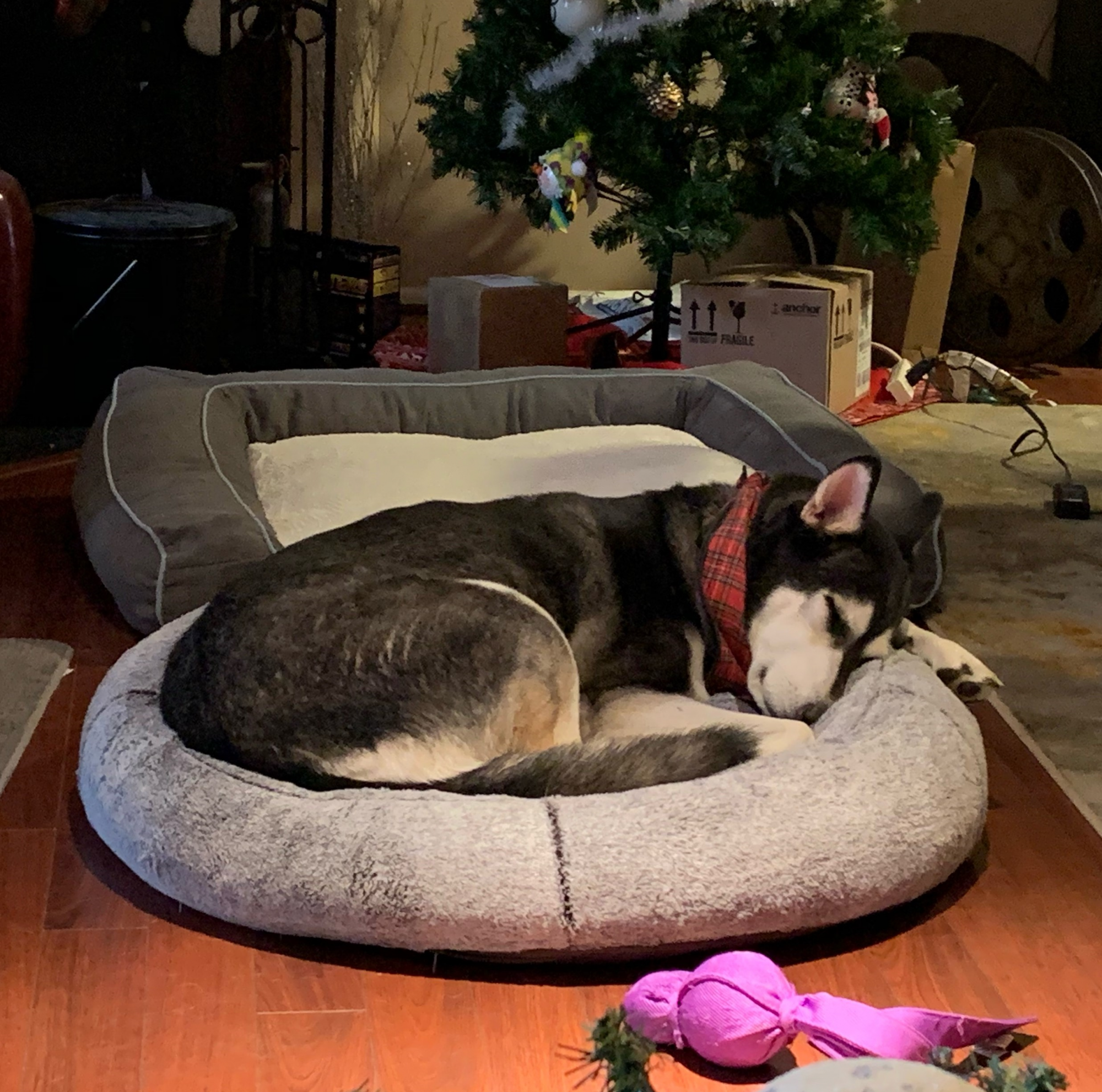
Long story short (you can read the entire story here: /blog/tag/leiomyosarcoma/), she eventually got an ultrasound which showed a mass at the junction of the bladder and the urethra (the tube between the bladder and the outside world).
Depending on its position, the mass would randomly block the urethra, making it physically impossible for Madeline to urinate. Not only is this incredibly uncomfortable, it can lead to various complications, including severe kidney damage.
Madeline’s owners went to several family vets and specialists to find a solution. They were told that the mass could not be removed or it would cause urinary incontinence.
The only treatment suggested was radiation therapy – for a mere $11,000 – and which might also lead to incontinence.
Madeline’s owners “felt hopeless. We couldn’t focus at work. Every day, we would wake up not knowing if this was the day that our dog would not be able to urinate and we would have to put her down. I felt like the vets gave our dog a death sentence with no answers and no option for her to have any help whatsoever. This did not seem right to us. It did not seem ethical. We asked them desperately what they recommended and they told us if there is one thing that they could recommend, “it is not to get surgery.” (…) She has no more than two weeks to live. We needed to monitor her closely to see when things got worse because then we would know when to put her down.”
Madeline’s owners found me through my website, and they reached out for help.
After reviewing her medical record and ultrasound report, I suggested a 2-step surgery:
Part 1. Remove as much of the tumor as possible.
Part 2. Place a “cystostomy” tube to drain the bladder through an opening in the skin.
About 1 week after surgery, the biopsy report came back. The mass was a rare cancerous tumor of the muscle of the bladder called leio-myo-sarcoma.
Madeline recovered well and immediately started urinating on her own.
Eight months after surgery, the tube became clogged and we collectively decided to remove it, rather than to replace it. It was a bit of a gamble, but Madeline was doing so well that we decided that the cons outweighed the pros. It was a judgement call, but so far it paid off: 4 months later, she continues to urinate on her own and is full of energy.
Madeline’s owner writes: “It’s truly a miraculous story and we still can’t get over it. We were so lucky to find you! Madeline is doing amazing! She has so much energy and acts like a puppy again. It was one of the best decisions of my life to get that surgery for Madeline.”
But wait! There’s more!
A few days ago, a desperate pet owner read Madeline’s story in my blog, and reached out to me. The subject line of the email was “I beg you for help.”
She wrote: “My dog Ninja, a 6 year old Siberian Husky, just had a ultrasound, and a CAT scan, then surgery to drain a cyst in his enlarged prostate (17 cm long – about 7 inches).”

“Because of the volume, it was pressing on the colon and the bladder. Ninja couldn’t defecate or urinate!”
“It was then discovered that the bladder has been so overstretched, that it couldn’t contract and enable Ninja to urinate. A urinary catheter was placed temporarily… and euthanasia was recommended!”
“I don’t want to put him down. He is eating, drinking and (now) pooping. He acting normal but can’t pee. Please help me, I am very desperate.”
We quickly scheduled surgery. Ninja had the same procedure as Madeline: a “cystostomy” tube to drain the bladder through an opening in the skin.
Of course, it’s a bit early to tell how Ninja will do long-term. So far, he is recovering well from surgery and is able to void through the tube. His loving owners are taking excellent care of him and got an unexpected, early Christmas present.
But wait! There’s more!
When I told Madeline’s owner that her blog may have saved another dog’s life, she shared:
“We are getting married on the date Madeline was saved a year ago: January 15!
And wait for it…
“Madeline will be the ring bearer in our wedding.”

So what’s the moral of the story?
You are your pet’s best advocate. If something makes no sense to you, don’t give up. Clearly, there isn’t a solution or a cure for every condition. But at least, explore your options.
This is exactly what Madeline’s and Ninja’s owners did. They didn’t take no for an answer, and saved their dogs’ lives.
Happy Holidays…
Phil Zeltzman, DVM, DACVS, CVJ, Fear Free Certified

Dr. Phil Zeltzman is a traveling veterinary surgeon in Pennsylvania & New Jersey. An award-winning author, he loves to share his adventures in practice along with information about vet medicine and surgery that can really help your pets. Dr. Zeltzman specializes in orthopedic, neurologic, cancer, and soft tissue surgeries for dogs, cats, and small exotics. By working with local family vets, he offers the best surgical care, safest anesthesia, and utmost pain management to all his patients. Sign up to get an email when he updates his blog, and follow him on Facebook, too!
Does the length of my pet’s incision matter?
Clients often ask me how long their pet’s incision will be after surgery.
Does the length of a pet’s incision matter?
The short answer is no. When it comes to incisions, it’s not the length that matters, but the care taken to keep it clean and protected.
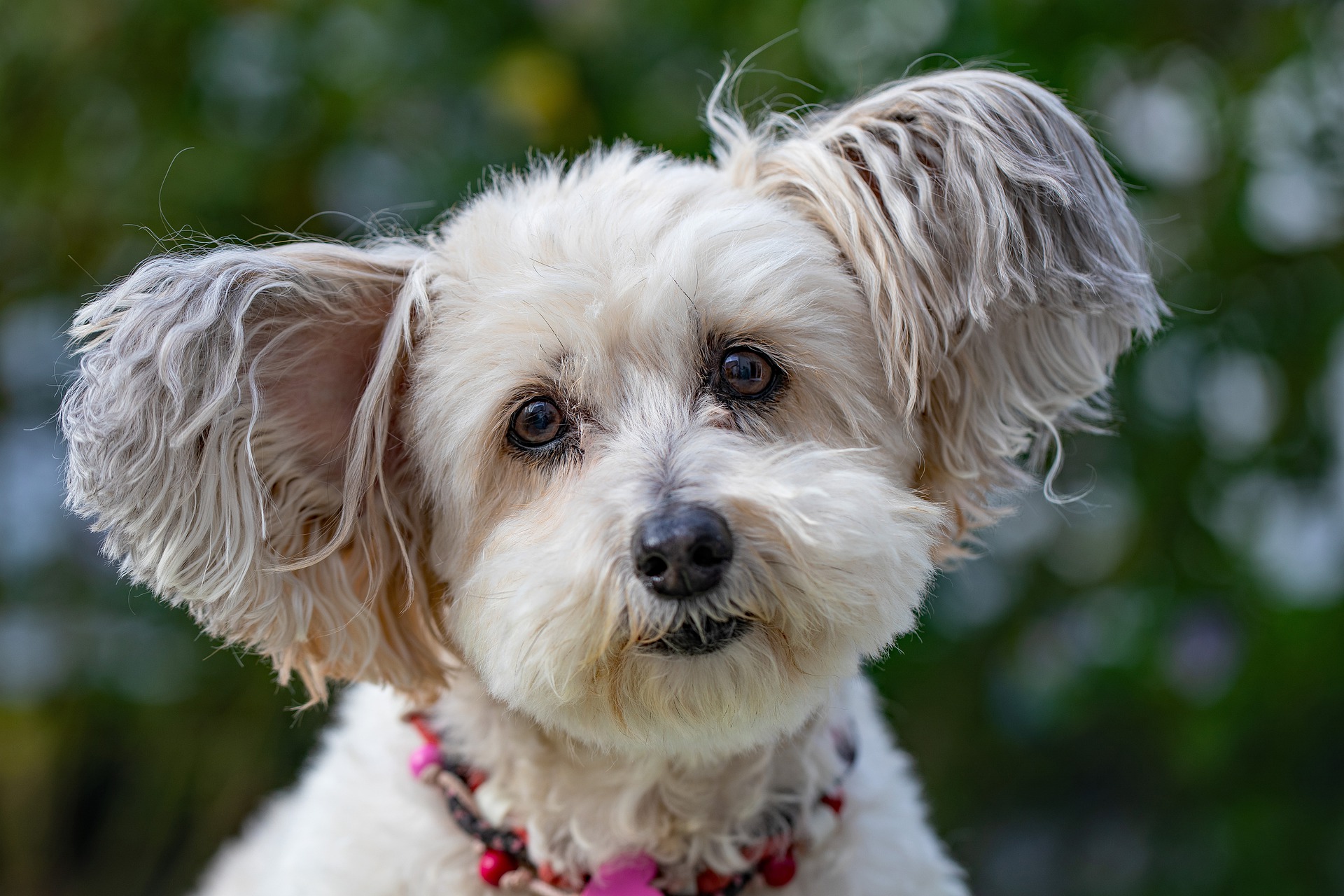
Incisions heal side to side, not end to end, meaning that a 1 inch incision and a 10 inch incision heal at the same pace – most often 2 weeks.
It’s very predictable.
It pretty much would be that simple, if it weren’t for pet’s obsession with licking their “wound.”
Why do they do it? It’s an instinct. They can’t help it. They don’t know better.
But people should…
In addition, the incision area may become itchy as fur grows back. A pet’s natural response to itchiness or anything unusual is to lick or chew.
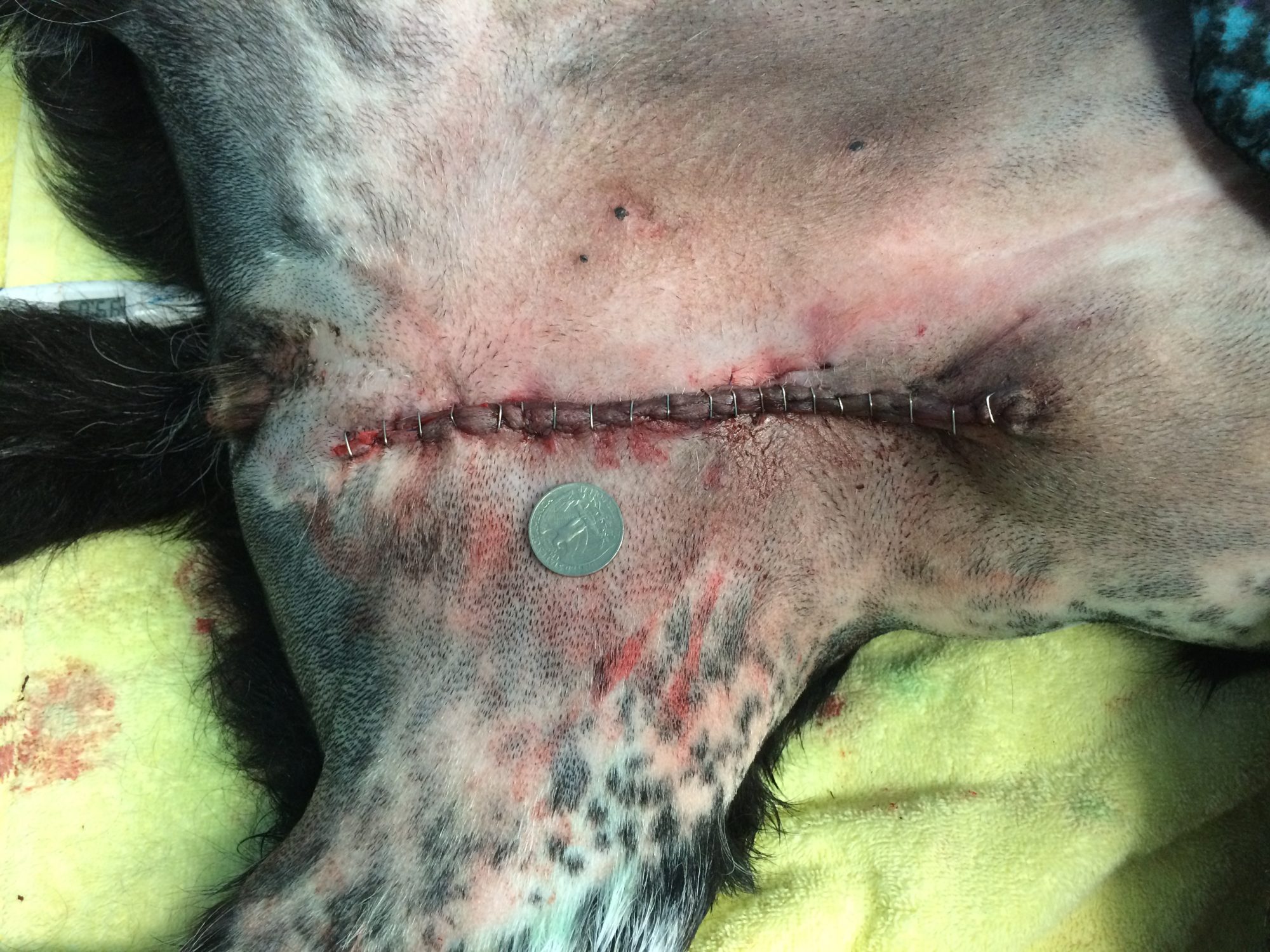
A few simple recommendations need to be followed to ensure that the incision heals without complications.
. Activity should be kept to a minimum. The skin and underlying tissues need time to heal. During healing, they cannot be stretched or moving constantly because motion slows healing down.
This is the reason why strict rest is critical for proper healing. Stairs, furniture, running, jumping and playing must be prevented during healing. Walks should be minimized to no more than 5 minutes, on a short leash, and for bathroom duties only.
. You should inspect the incision once or twice daily to make sure it looks good. If you see drainage, you can clean it with a soft cloth and tap water. Avoid using antiseptics of any type (peroxide, alcohol, cleaning solutions etc.) or triple antibiotic ointment. Only tap water. Then gently blot it dry.
. Speaking of drainage, what should you expect? Initially, some bleeding is possible. But then the red should turn to pink, and the pink should turn to clear (or light yellow). Then it should stop. Many times, you will not see any drainage.
If you see anything different, including a whitish, yellowish or greenish discharge, please get in touch with your vet or surgeon ASAP.
. You may also see bruising and swelling, both of which are common after surgery, just like in humans. It should decrease over time, then disappear.
. Whether stitches, skin glue or staples were used, the end result is the same: the edges of the skin should touch each other, and progressively fuse.
. The incision and surgery area should not smell much. If you notice a strong or foul smell, please get in touch with your vet or surgeon ASAP.
The next picture is a bit graphic, so please skip it if you have a sensitive stomach. It is not for the faint of heart.
. Most pet go home with a plastic cone (aka E-collar or Elizabethan collar) around their neck. It should be kept on at all times (24/7), even to eat, to prevent your pet from licking or chewing at the incision, which could cause it to open up and possibly get infected. We don’t use a cone when the incision is in the mouth or in a location where the edge of the cone might cause harm by rubbing on it. Throat and neck incisions come to mind.
REMINDER: THE NEXT PICTURE IS A BIT GRAPHIC. YOU HAVE BEEN WARNED.
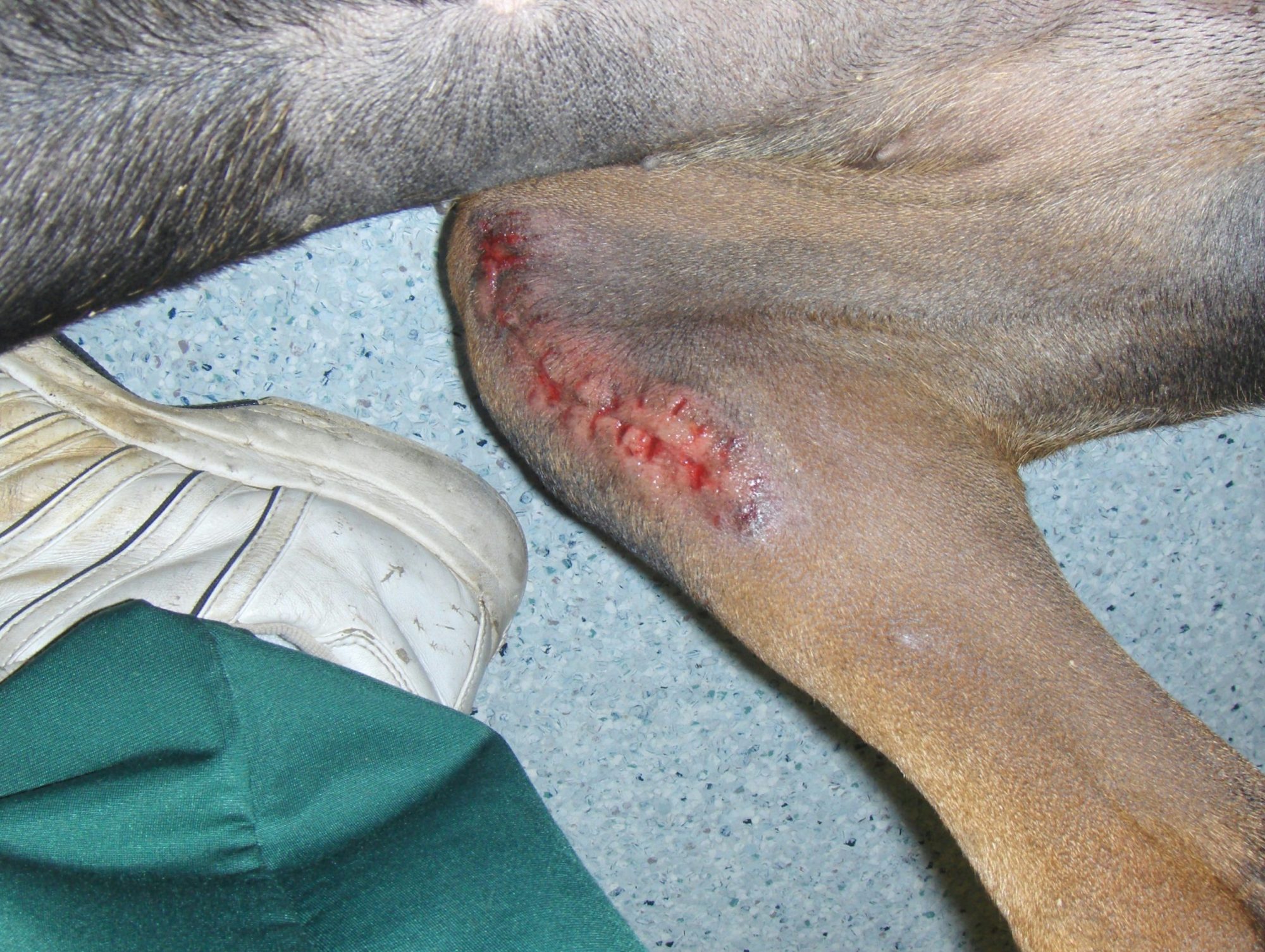
(caption: this dog was allowed to lick the incision, which didn’t open up but looks rough 2 weeks after surgery)
. Since your pet shouldn’t be able to lick the incision, you also need to prevent other pets from licking. We don’t know why they have this bizarre habit… we just know they do. So pets recovering from surgery should be separated from other pets so they can heal peacefully.
. You may have heard an urban legend that claims that pet saliva helps with healing. It’s a myth!
Is it important to remember that your pet’s tongue has been in all kinds of weird places. Yes, including that place!
Therefore, their tongue is covered in bacteria, some of which are very aggressive. When you smear a surgical incision with fecal bacteria… guess what can happen!
The next picture is very graphic, so please skip it if you have a sensitive stomach. It is not for the faint of heart.
. Of course, the other risk of licking or chewing is opening up the incision, partially or entirely. Sadly, that may require another surgery to stitch it closed. Ironically, it will require another anesthesia, more money… and another plastic cone!
REMINDER: THE NEXT PICTURE IS VERY GRAPHIC. YOU HAVE BEEN WARNED.
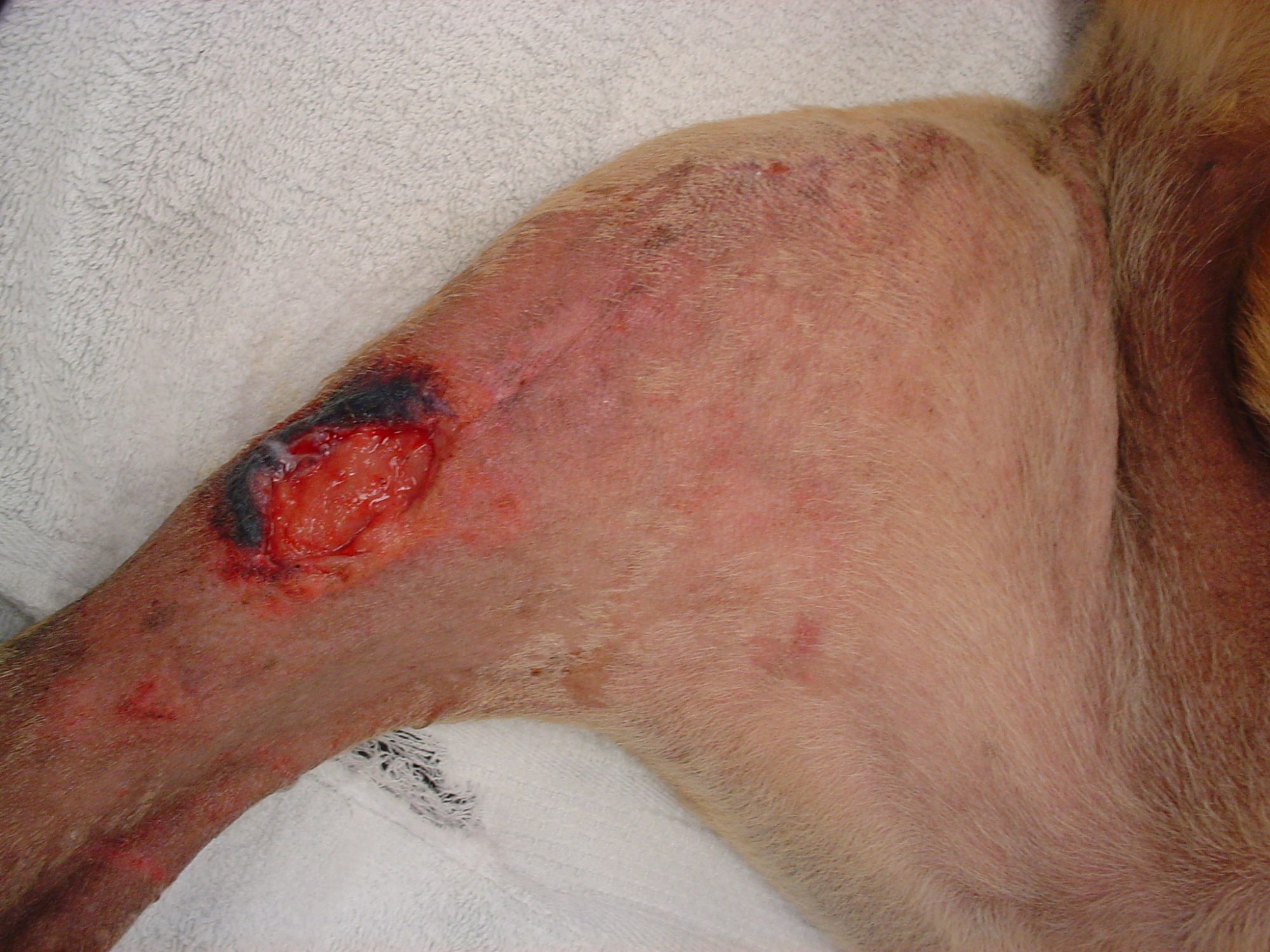
(caption: This dog was allowed to lick the incision, which opened up partially. A second surgery is needed to clean it up and close it. In the end, it’s always the pet who pays the price…)
. We cover some incisions with a Band-Aid, not to replace the plastic cone, not to protect them from the tongue, but to protect them from the environment. This may reduce the risk of infection.
So the rules as simple: prevent licking of the incision, keep your pet strictly rested, and you will give your pet the best chance at healing completely and uneventfully, the first time around, no matter the type of surgery.
Phil Zeltzman, DVM, DACVS, CVJ, Fear Free Certified

Dr. Phil Zeltzman is a traveling veterinary surgeon in Pennsylvania & New Jersey. An award-winning author, he loves to share his adventures in practice along with information about vet medicine and surgery that can really help your pets. Dr. Zeltzman specializes in orthopedic, neurologic, cancer, and soft tissue surgeries for dogs, cats, and small exotics. By working with local family vets, he offers the best surgical care, safest anesthesia, and utmost pain management to all his patients. Sign up to get an email when he updates his blog, and follow him on Facebook, too!
How do I know if my pet is in pain?
This is a very common question… and it does not have an easy answer.
An entire book could be written about pain!

Instead of a book, here are some general, practical guidelines.
1. Limping
This is one of the most difficult message to convey. Yet it’s simple.
LIMPING = PAIN – 99% of the time.
2. Decreased activity
If your pet suddenly or progressively doesn’t play as much or as long as usual, it’s important to find out why.
3. Difficulty in stairs
To simplify, going downstairs puts more pressure on the front legs, so they may be the issue.
And going upstairs puts more pressure on the back legs, so they may be the source of the problem.
4. Changing habits
If your dog runs like a maniac to greet you when you come back from work every single time, and progressively or suddenly doesn’t, why is that?
If your cat loves napping on a window sill to enjoy the sun, every single day after breakfast, and doesn’t anymore, why is that?
If your dog loves going on a walk, or a run, or a bike ride, and doesn’t anymore, why is that?
5. Difficulty jumping
If your pet routinely jumps on the couch, or your bed, on in your car, or on a chair, and suddenly or progressively doesn’t as easily, it may be because of pain.
6. Difficulty getting up
Struggling to get up after a nap or in the morning, or stiffness in the legs, can also be a sign of pain or arthritis.
7. Change in appetite
Painful pets often lose their appetite, even for a favorite treat. It could be sign of pain in a leg (difficulty walking to you or to the bowl), or neck pain (reaching the bowl, which may need to be elevated), or pain in the mouth or in the teeth.
8. Not wanting to be touched
Pain can lead to “guarding” a leg or the belly, or becoming “head shy”. A classic example is a pet with ear pain or an ear infection (e.g. Cockers). Similarly, no longer wanting to be petted or picked up is a sign to take seriously.
9. Hunched position
A hunched position can be a sign of belly pain or back pain. Either way it can be very serious.
10. Reluctance to move a body part
This can apply to legs, and also to the neck. If your dog doesn’t like moving the neck up, down or to the side, and tend to look at you without moving the head, it can be a sign of neck pain.
11. Hiding
Cats are notorious for this. Either they hide, or they sleep in unusual places.
12. Grooming changes
Not grooming as much, or over-grooming or licking a particular body part can also be a sign of pain or arthritis.
13. Vocalizing
Crying or vocalizing may be a sign of pain, but PLEASE do not count on that to decide your pet is in pain. Many pets, if not most, will not cry when in pain.
14. Aging
Just kidding!
As I always say, “age is not a disease.” While slowing down can be normal, just like in people, limping or being in pain is not.
We can successfully treat countless conditions we were unable to help with before. You no longer have to accept your pet no longer playing or not wanting to go on walks because he or she is “just getting old.” It’s probably because they are painful or have arthritis. Both can and should be treated!
15. Off
Nobody knows your pet as well as you do! Sometimes, a subtle change, a gut feeling, a new routine, can give you an indication that something’s off.
Trust your instinct. Don’t brush it off. Ask yourself – or you vet – what this is happening. Everything happens for a reason in the pet world!
Here are a few more important points to keep in mind:
1. Hiding
Animals are very good at hiding when something is wrong. Remember, in the Wild, if an animal acts sick, they get eaten. Sadly, our pets have kept this ability. Cats are notorious for that.
2. Expression
Pain and its expression can vary dramatically from breed to breed, and from pet to pet. We know for a fact that some pets are more stoic, and others are more… “sensitive”.
3. Surgery
In my world as a surgeon, surgery is a classic way to help painful patients. Fixing a broken leg, repairing a torn ACL or removing a cancerous mass are just a few examples.
4. No surgery
But keep in mind that there are many ways to decrease or stop the pain without surgery including: weight loss, cold therapy, heat therapy, joint supplements, environmental changes, improving traction, acupuncture, harnesses, physical therapy, massage etc.
5. Warning
Please do NOT give any medication over the counter, or any human medication, or leftover medication from this or another pet, unless directed by your veterinarian.
Many human drugs are toxic to our pets, even deadly.
Something as “simple” as aspirin is a huge problem in a pet because:
1. We cannot give a better, safer, stronger anti-inflammatory drug for 7 days after stopping the aspirin and
2. If surgery is necessary, we cannot perform it safely for 7 days because aspirin thins the blood and increases the risk of bleeding!

ANY source of pain should be a reason to see your family vet or a board-certified surgeon.
As I always say, “pain is not acceptable.”
Pain should be taken very seriously – and vets are here to help you, help your pet.
Phil Zeltzman, DVM, DACVS, CVJ, Fear Free Certified

Dr. Phil Zeltzman is a traveling veterinary surgeon in Pennsylvania & New Jersey. An award-winning author, he loves to share his adventures in practice along with information about vet medicine and surgery that can really help your pets. Dr. Zeltzman specializes in orthopedic, neurologic, cancer, and soft tissue surgeries for dogs, cats, and small exotics. By working with local family vets, he offers the best surgical care, safest anesthesia, and utmost pain management to all his patients. Sign up to get an email when he updates his blog, and follow him on Facebook, too!
What Is Quality of Life For a Pet?
I frequently have difficult conversations with pet owners that revolve around quality of life.
Most recent examples include:
. Is it ethical to perform ACL surgery in a pet with cancer?
. Is it reasonable to perform surgery in a 13 year old dog with laryngeal paralysis (ie who suffocates around the clock)?
. Is it fair to amputate a pet who has non-operable cancer on a leg?
It certainly depends on the situation, but overall the answer is YES – for the right pet and the right pet owner.
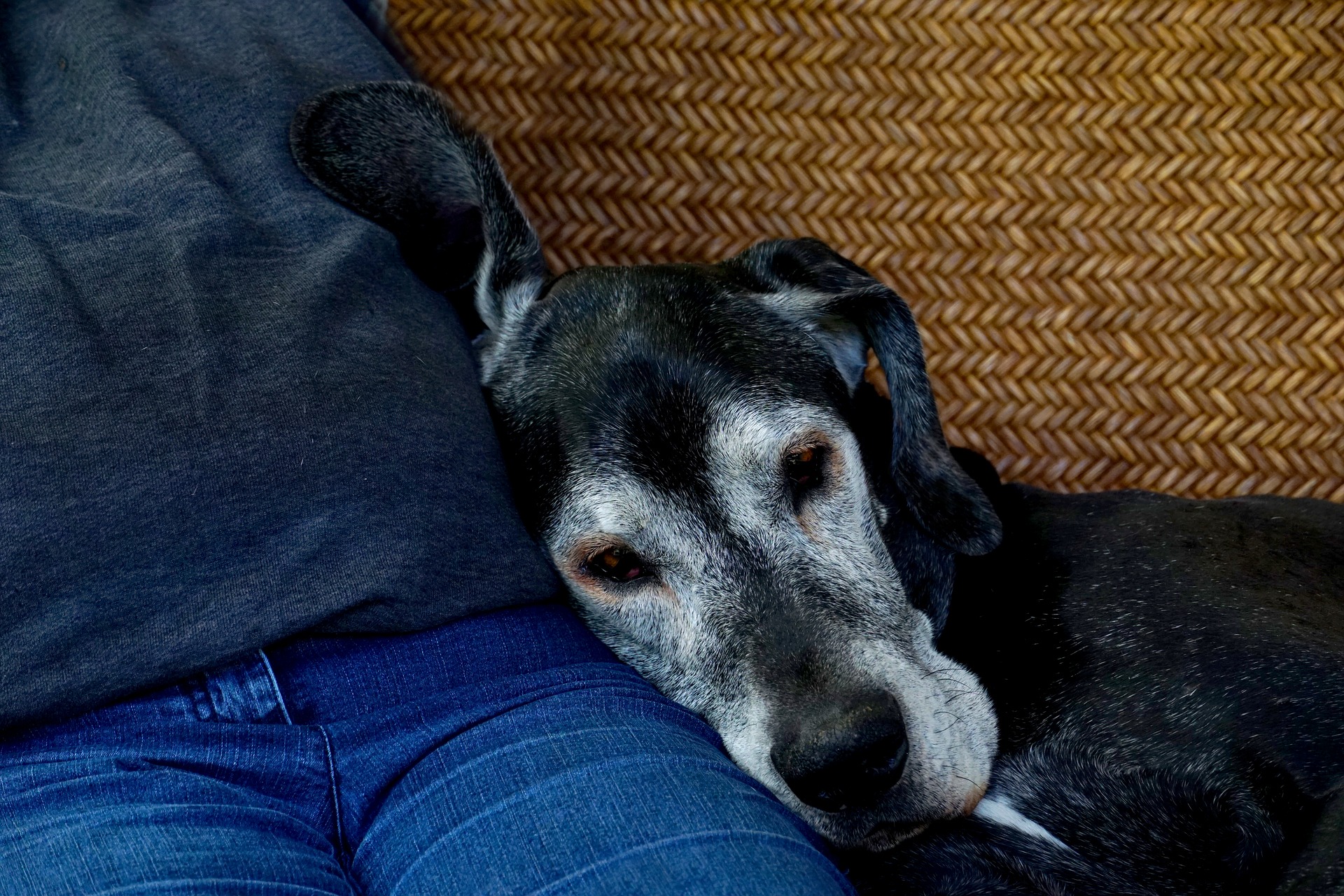
Pets don’t need a vacation home, stock options or designer clothes.
What they do need is being able to eat, drink, breathe, walk, urinate, defecate, groom and sleep – all in a pain free manner. And hopefully, you can expect a little tail wag here and there from a dog and a happy meow from a cat.
This list is certainly debatable, I admit it. One could add that a pet should be free of loneliness, fear and boredom. But I think the short list is a good starting point when you consider medical conditions.
If any of these basic bodily functions doesn’t take place, or if it occurs with difficulty, discomfort or pain, then your pet has a decreased quality of life.
What can you do then? You need to start by having a serious conversation with your family veterinarian. Or a board-certified surgeon.
Questions that need to be answered are:
. Is my pet suffering?
. Why is my pet painful?
. How can we decrease the pain?
. Can medications help?
. Can surgery help?
Of course, you may not hear the real story, the truthful story, because some people may not be bold or upfront enough to tell you what you need to hear.
I regularly talk to clients whose cat has been beyond constipated for YEARS before they got help (surgery is the only realistic solution).
I regularly talk to clients whose dog has been struggling to breathe for months or even years before they sought help (surgery is the only realistic solution).
I regularly talk to clients who had been told that a skin mass is not a big deal, or that a mass cannot be removed… when it truly is a big deal, and it absolutely can and should be removed.
Of course, surgery is not always the only option, I’m much more objective than that!
If your dog limps, pain medications, surgery, joint supplements, weight-loss or a “joint food” might help.
If your pet has a hormone imbalance, medications may solve the problem. The list goes on…
How can you tell if your pet’s quality of life is changing?
One subjective but simple way is to use a scale from 1 to 10, 1 being the poorest quality of life and 10 being the best. If you rate your pet as a 9 in January and a 2 in May, then it is time to face the evidence. It’s time to have a heart-to-heart discussion with your family and your veterinarian about what can realistically be done.
If you are starting to wonder about your pet’s quality of life, here is my suggestion: print a few copies of the “HHHHHMM” Quality of Life scale. Then fill in one table regularly – monthly, weekly or even daily depending on the situation.
This will help you see a trend more objectively: is your pet’s status the same, better, or worse than last time you assessed the situation?
Remember this very important concept: “age is not a disease.” Just because a pet is 12 or 14 or 16 years old does not mean you should give up easily. That said, if neither pain management nor medical and surgical treatments can help, then maybe it is time to consider euthanasia.
As emotionally and ethically difficult as it is for a pet owner, the whole family, and the veterinarian and his/her staff, euthanasia is sometimes the only reasonable, humane solution. It may be the only way your pet finds relief.
Quality of life includes your pet’s right to stop suffering with dignity once all reasonable options have been exhausted.
Phil Zeltzman, DVM, DACVS, CVJ, Fear Free Certified

Dr. Phil Zeltzman is a traveling veterinary surgeon in Pennsylvania & New Jersey. An award-winning author, he loves to share his adventures in practice along with information about vet medicine and surgery that can really help your pets. Dr. Zeltzman specializes in orthopedic, neurologic, cancer, and soft tissue surgeries for dogs, cats, and small exotics. By working with local family vets, he offers the best surgical care, safest anesthesia, and utmost pain management to all his patients. Sign up to get an email when he updates his blog, and follow him on Facebook, too!
Nino’s open chest surgery reveals a shocking finding
Nino, a sweet 11 year old pit bull, had recently developed a cough.
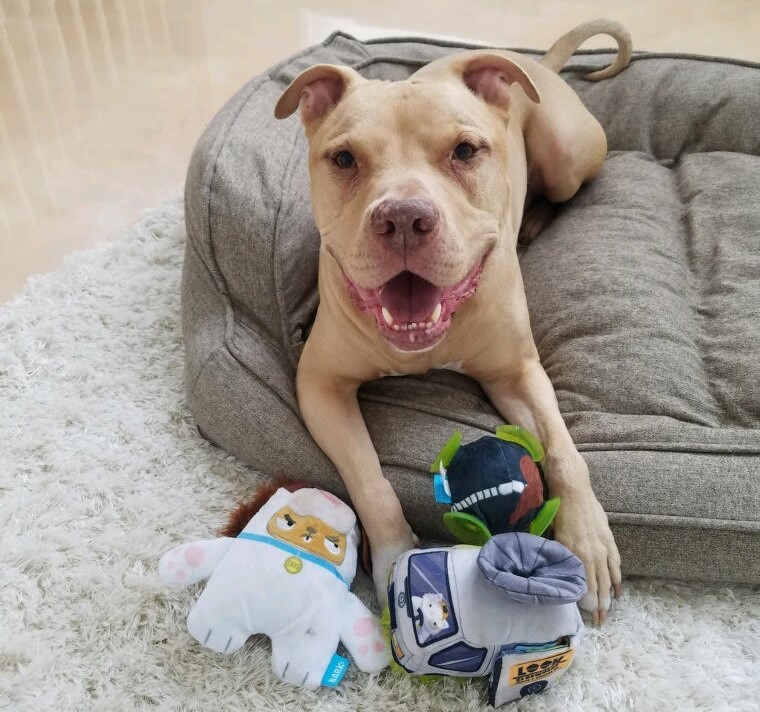
Initially, he was coughing from time to time. Then the coughing became more frequent. His owner took him in to see his family vet. Chest X-rays revealed a shocking finding. Nino had a mass in his left lung. Statistically speaking, this was very likely to be cancer.
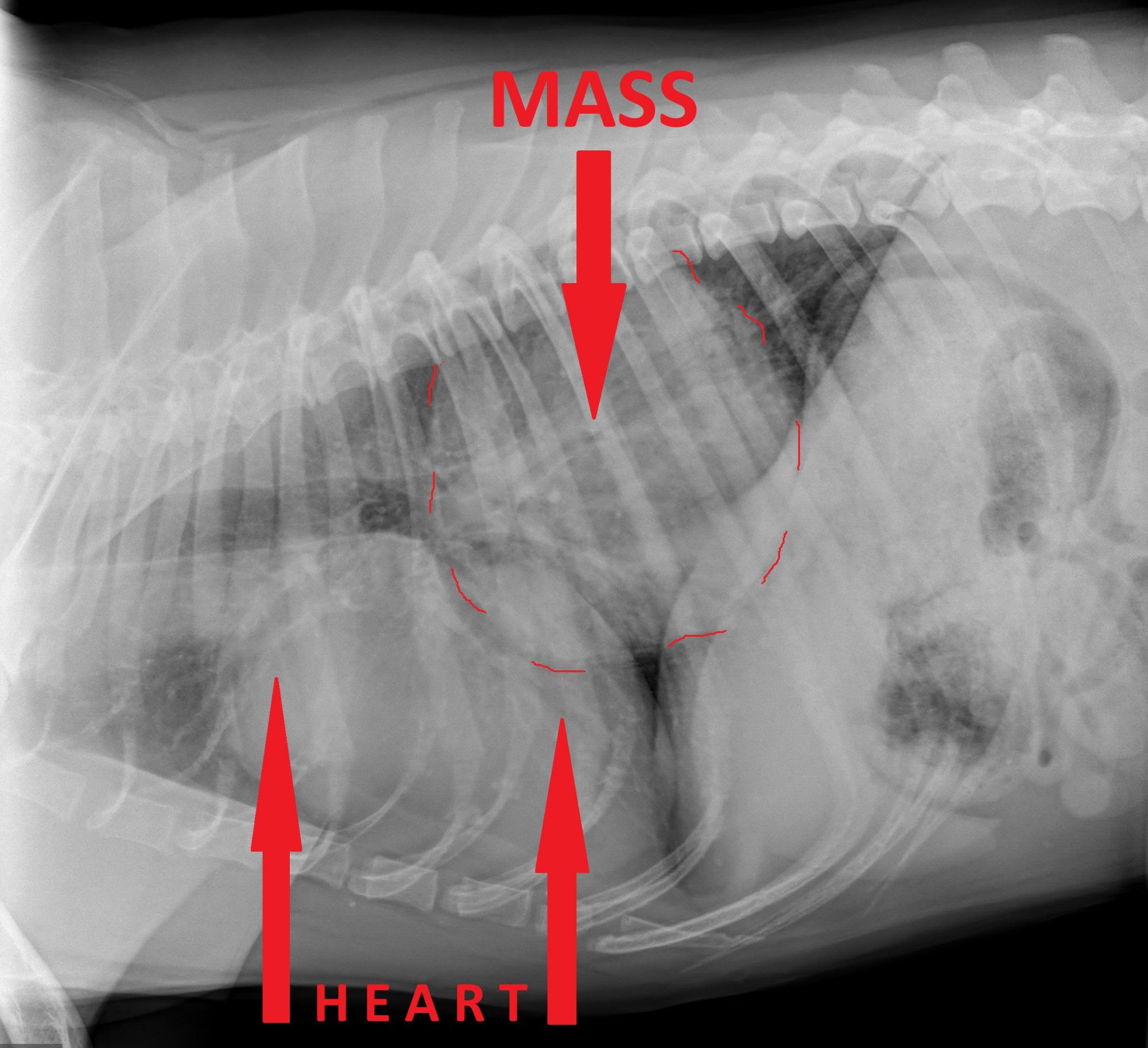
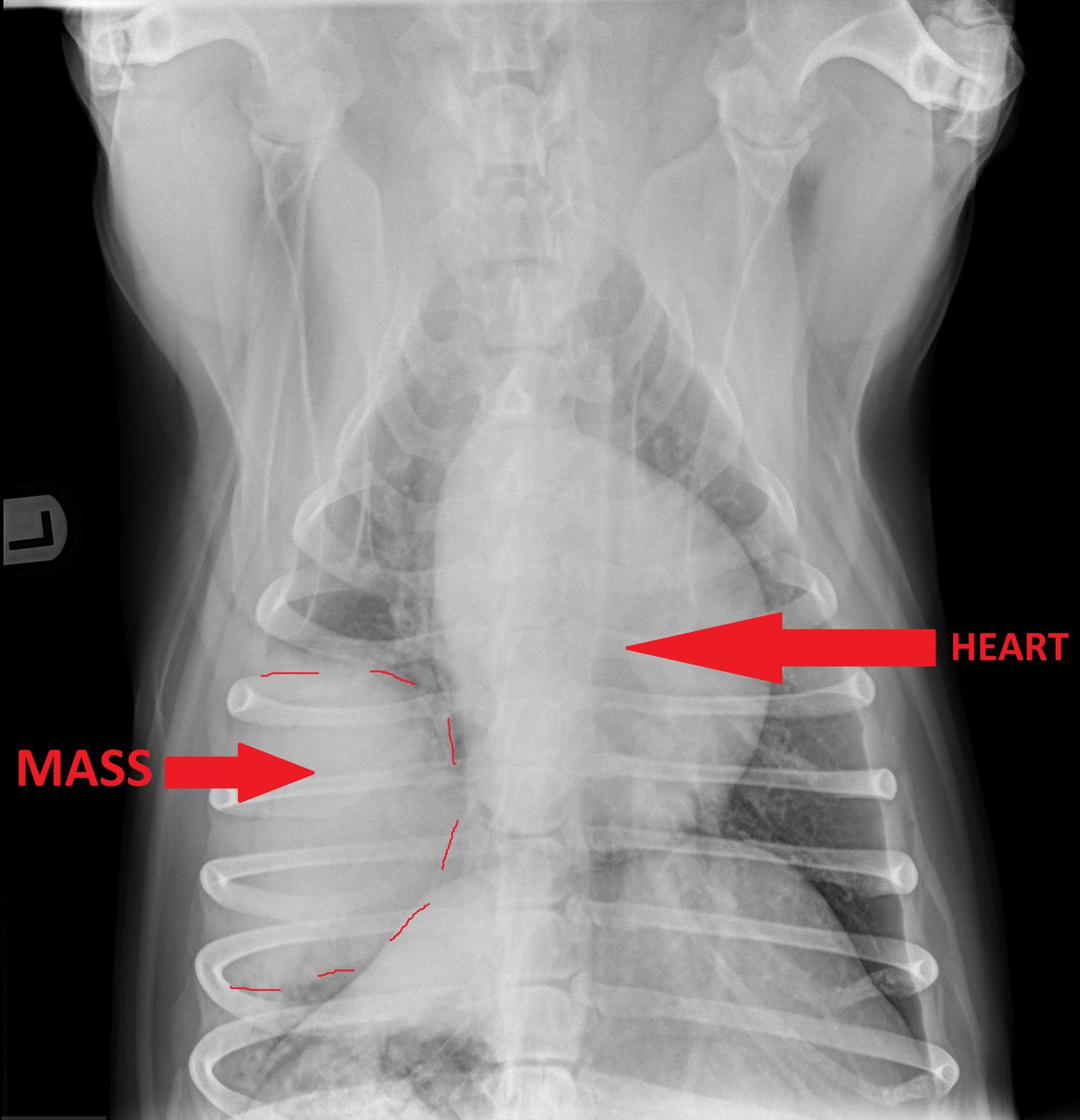
The X-rays above show the heart and the mass (with a broken line around it to show it better).
Nino’s owner says: “We were in disbelief and shock. He has always been a very active dog.”
The vet recommended an ultrasound of the chest to collect more information regarding the mass. According to the ultrasound, it measured about 8 by 9 cm (3 by 4 inches), so roughly about the size of your fist.
The client continues: “We immediately left in search of a surgeon’s opinion as we knew this would be a dangerous and heavy procedure.”
“By searching for recommended pet surgeons in Pennsylvania, we found your name and website, along with previous stories and reviews.”
Nino’s owner reached out to me to discuss surgery (lung lobectomy). Could this mass be removed?
Nino’s owner said: “After several consultations with you, we were hopeful but never more terrified. The level of risk explained was almost too much to handle for any loving pet parent. There was no choice other than to perform the surgery. You get a small sense of hope when you know you’re doing the only thing possible to help him. But the doom and gloom prevail. We dreaded the surgery date until it finally came.”
We worked quickly to get Nino’s surgery on our schedule.
FAIR WARNING: THE FOLLOWING PICTURES ARE GRAPHIC.
Once we got into surgery, there was one tiny little problem: the mass was much larger than the ultrasound suggested!
It was about 15 cm (or 6 inches) in diameter, or about the size of a large grapefruit!
REMINDER: THE FOLLOWING PICTURES ARE NOT FOR THE FAINT OF HEART.
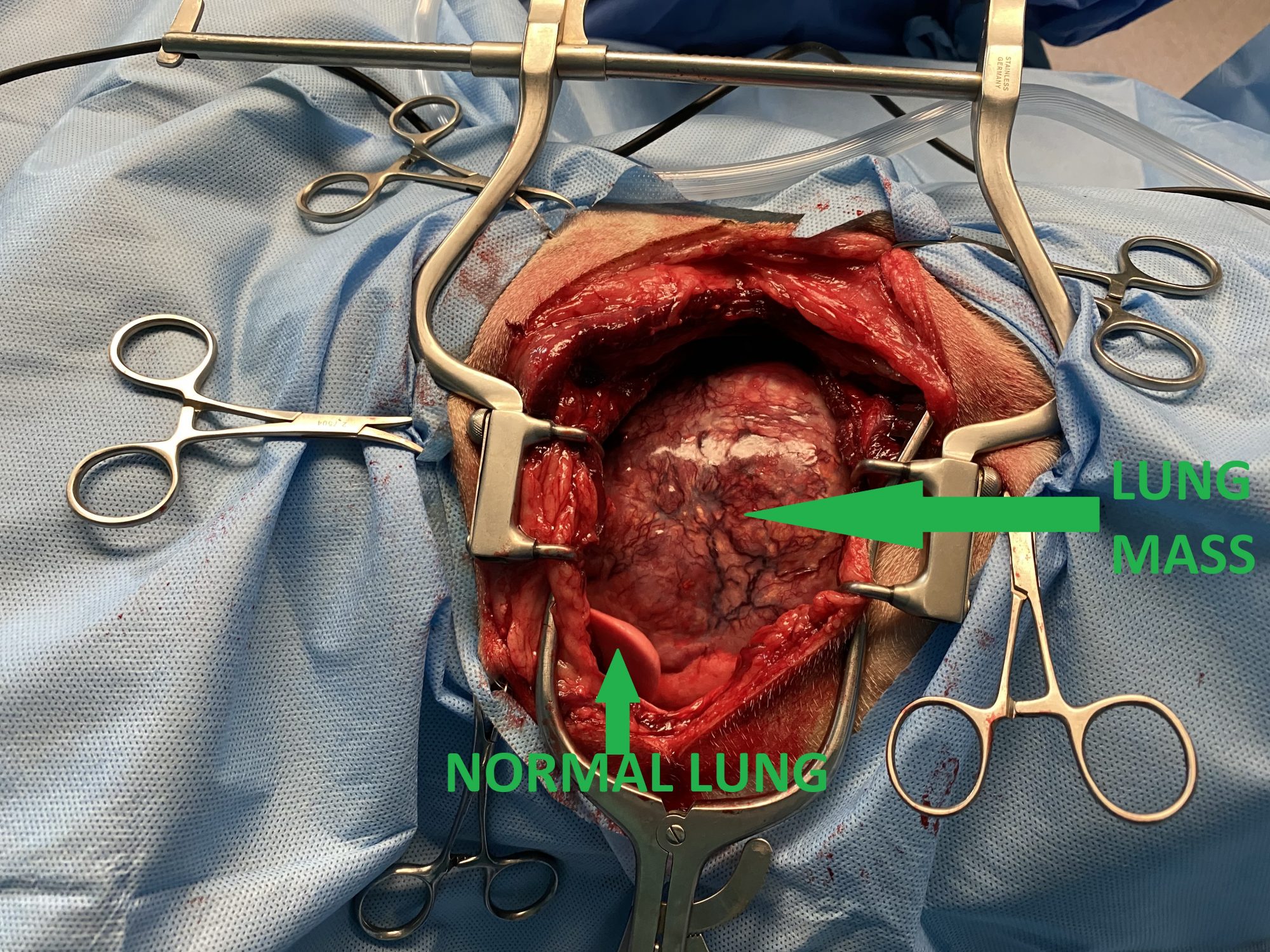
Nino’s owner and I had made a deal before surgery. If anything was different from what we thought, or if the risk was higher than expected, I would call him to brainstorm.
Of course, I kept my promise. We talked in the middle of the open-chest surgery to discuss my findings. I said I was 90% sure I could remove the mass safely. The owner was committed to doing what was best for Nino, so he gave the OK to continue on with surgery.
We went back to surgery. I will spare my sensitive readers of the details of the surgery, obviously it was somewhat delicate…
Meanwhile, the emotional roller coaster goes on: “Once we got your call that we could have a successful outcome with a 90% “belief,” we were extremely excited. A huge weight felt like it was lifted, even though the hard work hadn’t started yet. We continued to do nothing but pray and try to be positive through what will always be one the worst times of our lives yet.”
In order to remove the entire mass, it appeared that we would have to sacrifice the entire left lung, not just the one lobe as planned (removing a whole lung is called a pneumonectomy). In the end, the tumor was removed – safely. Pfew! Mission accomplished.
(Quick crash course in anatomy if this makes no sense. We have 2 lungs, left and right. Each one is made of several parts or “lung lobes”. So instead of removing just the lobe with the mass, we removed all lobes on the left, i.e. the entire left lung. The right lung of course stayed in place.)
FINAL WARNING: THE NEXT PICTURE IS VERY GRAPHIC !!!
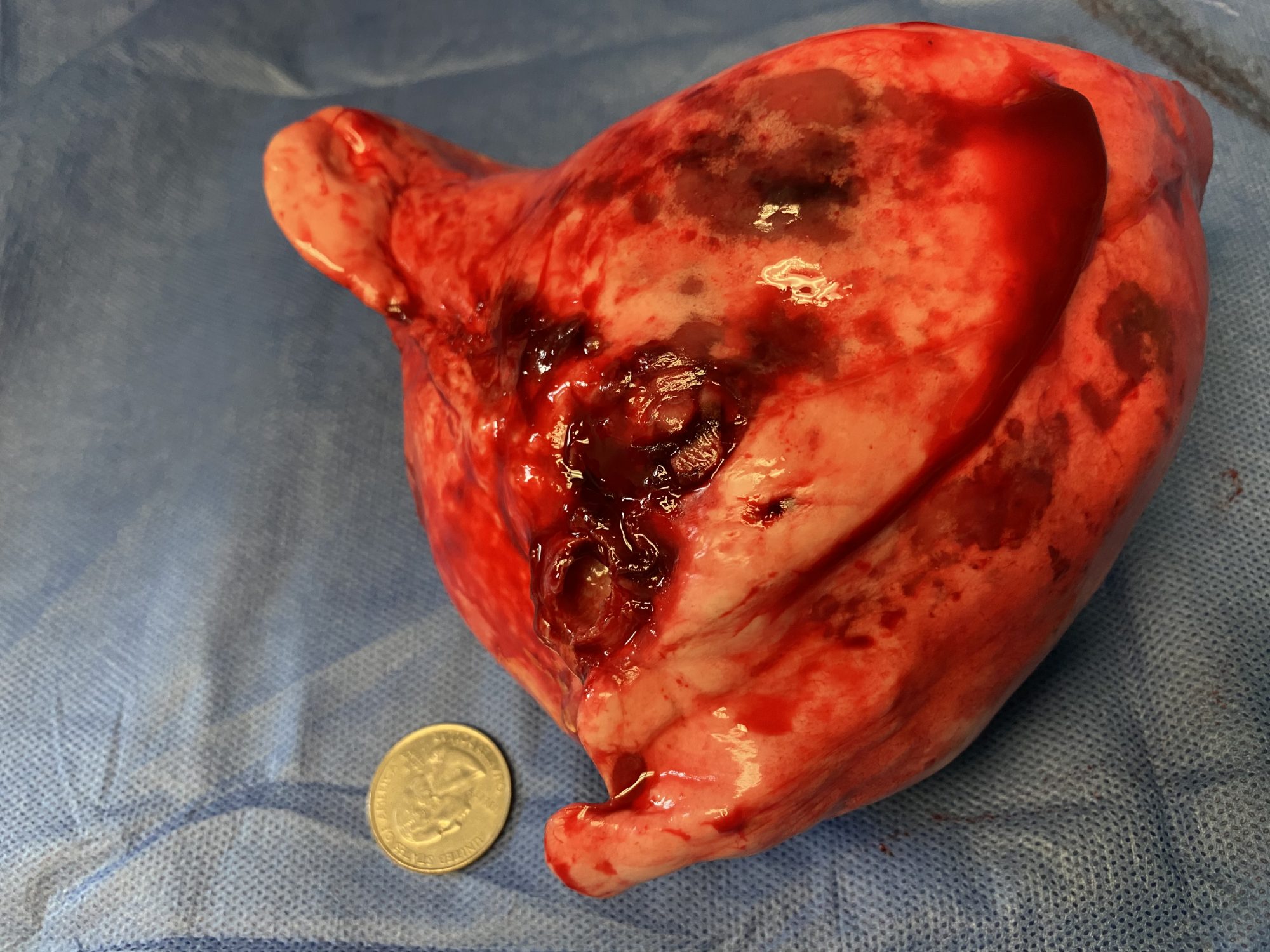
Once the left lung was removed, we needed a way to remove air and fluid from that side of the chest. This is done with a device called a chest tube. It usually only stays in place for a few days after surgery, and can be removed once there is no more air and not too much fluid left.
Nino recovered from surgery and anesthesia smoothly.
That’s when I called the owner again to confirm that surgery was over and Nino was safe – for now.
He later commented: “The news that the mass was removed and he was in recovery was simply a miracle. Nothing else compares to that feeling. Never been more thankful in my life.”
Nino was transferred to the local emergency clinic for overnight care, so the nurses could monitor Nino’s comfort and breathing, and take care of the chest tube.
Nino did so well overnight, that the chest tube was removed the very next day. He was discharged shortly after that. He recovered uneventfully at home.
The next day, his owner sent this amazing update: “He’s been resting and taking all medications without issue. We’ve had no whining/crying at all, and his appetite is great.”
In addition: “Nino has not coughed once. He hasn’t moved much either, but he used to cough just sitting there. So that’s great!
We love having him back home. Nothing is better. And we were so glad to get him back sooner than expected.
His breathing also seems to be much smoother and normal paced.”
About a week later, the biopsy results came back and confirmed the suspicion of lung cancer (pulmonary carcinoma).
Two weeks after surgery, another great update: “Nino is still doing great. He is eating, drinking and relieving himself regularly with no issue. (…)
He has more energy and strength than expected, so our biggest battle lately is keeping him from running or playing.
His breathing seems to be slower and more controlled than it was before his surgery and he seems more comfortable in general. We have had a couple random coughs but nothing alarming.”
In case you’re wondering: dogs, like people, can live with only one lung. Nino may not be able to run a marathon, but this amazing 11 year old trooper should be able to live a happy, comfortable life as a family pet.
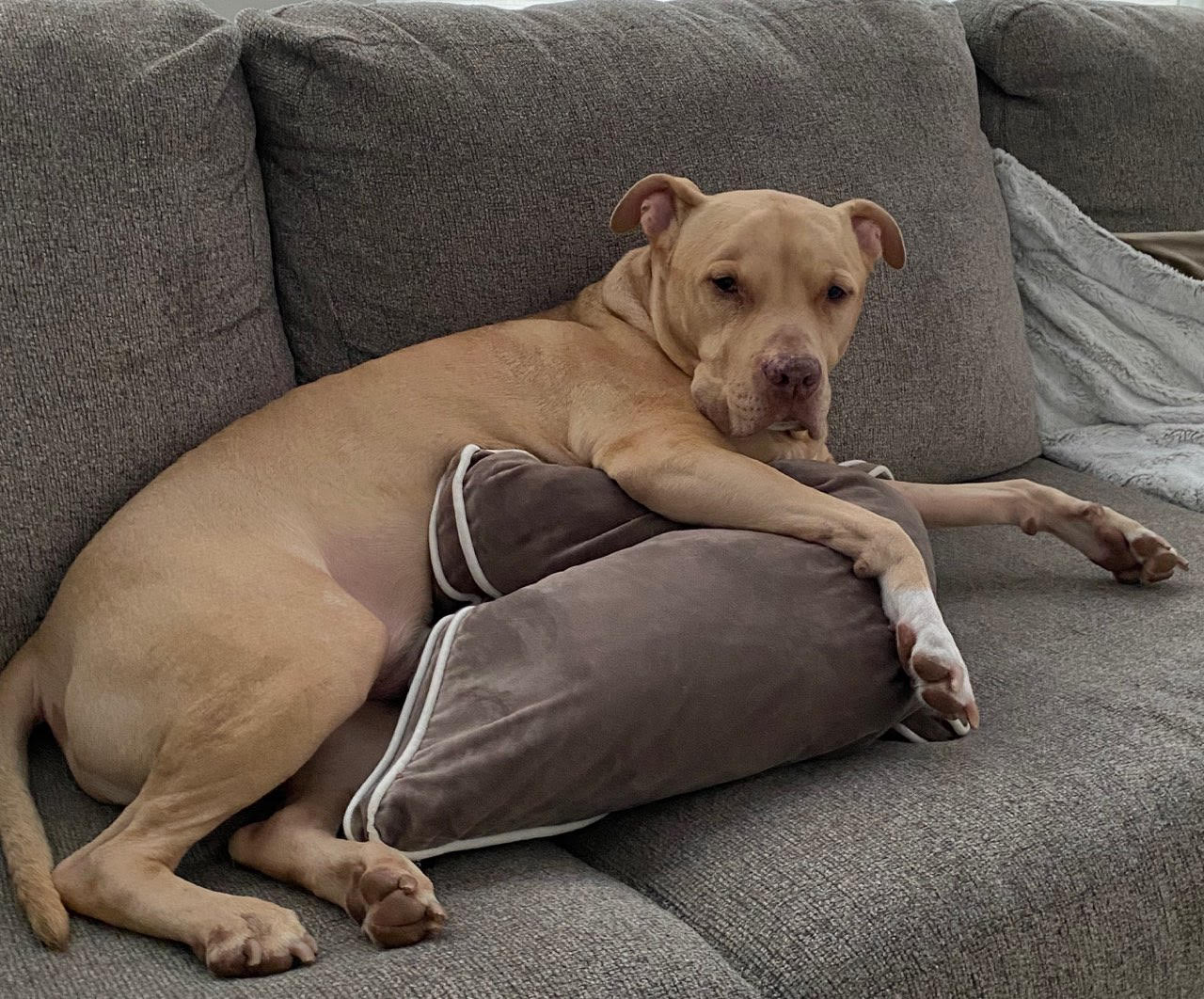
As of this writing, it’s been over 2 months since surgery and the patient is doing well.
Nino’s super dedicated owner concludes: “Thanks to you and your team, we have a second shot at life. This has been a nightmare since our first visit with our vet. I had never been so scared of something and so scared of trusting anyone. You and your team saved our dog’s life. There has been no greater moment in our lives.”
Phil Zeltzman, DVM, DACVS, CVJ, Fear Free Certified

Dr. Phil Zeltzman is a traveling veterinary surgeon in Pennsylvania & New Jersey. An award-winning author, he loves to share his adventures in practice along with information about vet medicine and surgery that can really help your pets. Dr. Zeltzman specializes in orthopedic, neurologic, cancer, and soft tissue surgeries for dogs, cats, and small exotics. By working with local family vets, he offers the best surgical care, safest anesthesia, and utmost pain management to all his patients. Sign up to get an email when he updates his blog, and follow him on Facebook, too!

